4 Easy Ways to Reset Administrator Password in Windows 10 Using Command Prompt
- Home
- Support
- Tips System Rescue
- 4 Easy Ways to Reset Administrator Password in Windows 10 Using Command Prompt
Summary
Having trouble accessing your Windows 10 administrator account? Don't worry, resetting the password via command prompt is quick and easy. In this article, we cover four efficient methods to reset your administrator password, with and without logging in. Plus, don't forget the importance of backing up your data before attempting any password changes.
Table of contents
| Windows Version | Download Link | Requirement |
|---|---|---|
| Windows 7 | https://learn.microsoft.com/lifecycle/products/windows-7 | PC with a working Internet connection/ a blank USB flash drive or DVD with at least 8 GB of available storage space/ a product key |
| Windows 8/8.1 | https://www.microsoft.com/software-download/windows8 | Same to above |
| Windows 10 | https://www.microsoft.com/software-download/windows10 | Same to above |
| Windows 11 | https://www.microsoft.com/software-download/windows11 | Same to above |
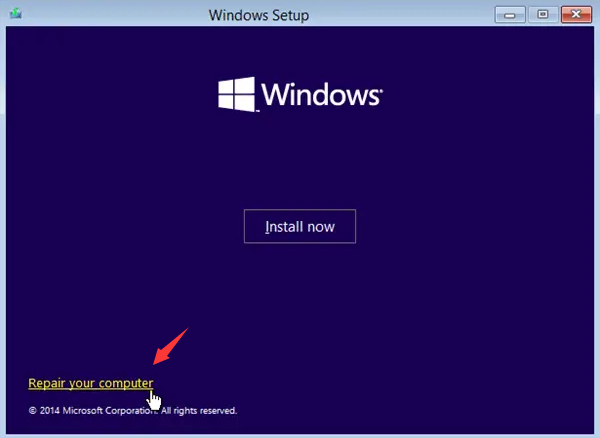
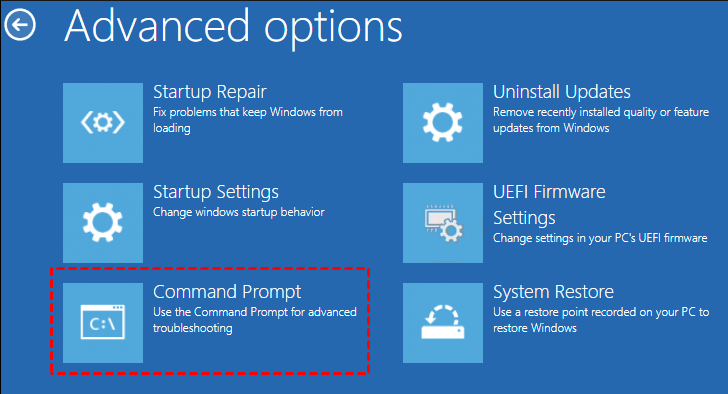
move c:\Windows\System32\sethc.exe c:\
copy c:\Windows\System32\cmd.exe c:\Windows\System32\sethc.exe
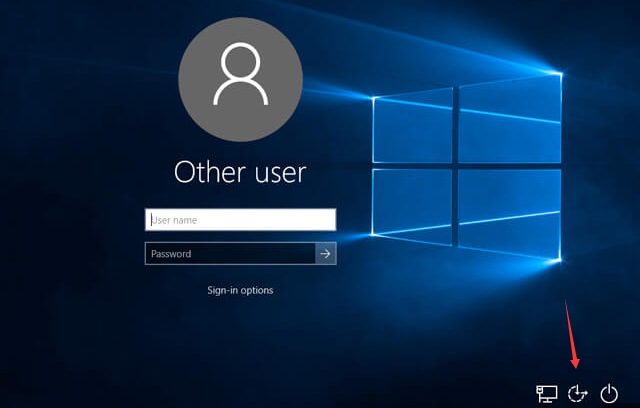
net user username *
net user user_name *
net user user_name new_password
- Can be used to change password without forgetting it
Cons:
- Requires a Windows 10 installation disk
- Requires some knowledge of using computer consoles
- May not work on certain computer systems
move C:\windows\system32\utilman.exe C:\
copy C:\windows\system32\cmd.exe C:\windows\system32\utilman.exe
net user
copy C:\utilman.exe C:\windows\system32\utilman.exe
Start by downloading Renee PassNow from the official website and install it on a different computer that you can access. You can choose the appropriate version based on your computer’s operating system.

Remove Windows Login Password 3 steps for whole password remove process.
Recover the files Recover the deleted files without Windows system.
Transfer the data Transfer the important files of the computer with system.
Fix Windows startup error Fix various Windows startup failures or crashes.
Erase disk Completely erase disk files which will not be restored.
Remove Windows Login Password 3 steps for whole password remove process.
Recover the files Recover the deleted files without Windows system.
Transfer the data Transfer the important files of the computer with system.
Launch Renee PassNow and insert a USB flash drive or blank CD/DVD into the computer. Select the option to create a bootable media. Follow the on-screen instructions to complete the process.
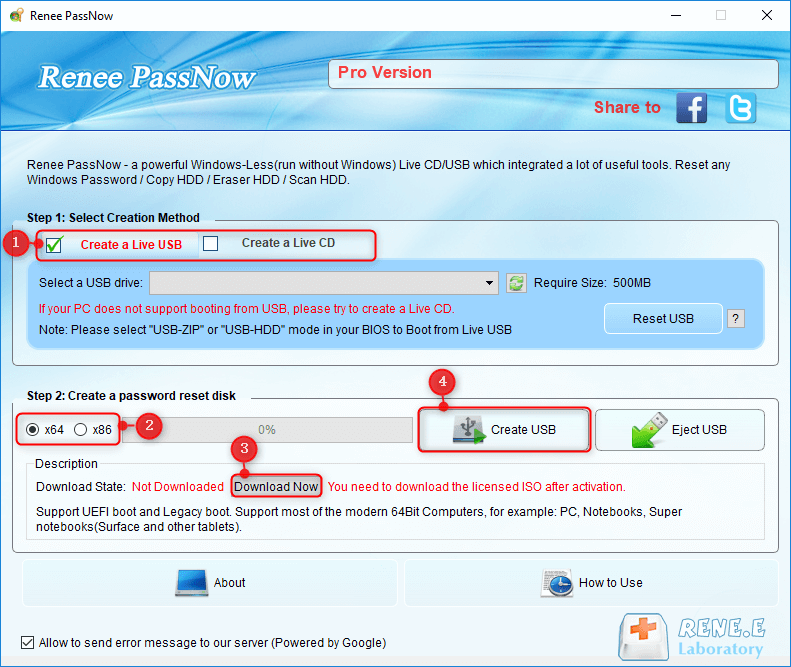
Insert the bootable USB or CD/DVD into the locked Windows computer. Restart the computer and enter the BIOS settings by pressing the appropriate key (usually F2 or Delete). Configure the boot order to prioritize the bootable media.
| Server Type | Enter boot menu method |
|---|---|
| DELL | Press the F12 key repeatedly before the Dell logo appears on the screen. |
| HP | Press the F9 key multiple times when the HP logo is displayed. |
| BIOS Name | Enter boot menu method |
|---|---|
| ASRock | DEL or F2 |
| ASUS | DEL or F2 for PCs/ DEL or F2 for Motherboards |
| Acer | DEL or F2 |
| Dell | F12 or F2 |
| ECS | DEL |
| Gigabyte / Aorus | DEL or F2 |
| Lenovo (Consumer Laptops) | F2 or Fn + F2 |
| Lenovo (Desktops) | F1 |
| Lenovo (ThinkPads) | Enter then F1 |
| MSI | DEL |
| Microsoft Surface Tablets | Press and hold Power and Volume Up buttons |
| Origin PC | F2 |
| Samsung | F2 |
| Toshiba | F2 |
| Zotac | DEL |
| HP | Esc/ F9 for `Boot Menu`/ Esc/ F10/ Storage tab/ Boot Order/ Legacy Boot Sources |
| INTEL | F10 |

After successfully booting from the bootable media, Renee PassNow will load. Select “PassNow!” function after booting from the new created Windows password reset disk.
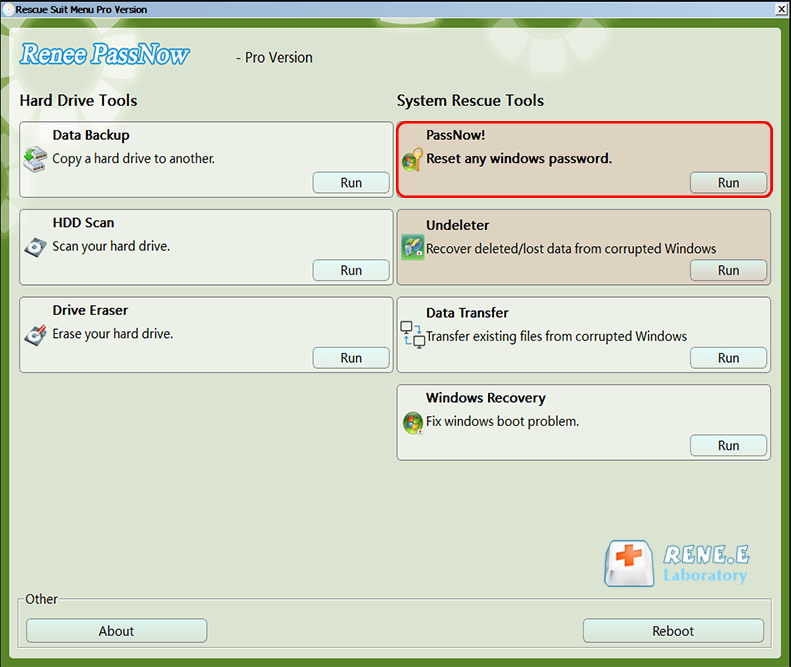
Choose the user account for which you want to reset the password. Then, click on the “Clear Password” button. Renee PassNow will remove or reset the password for the selected user account.
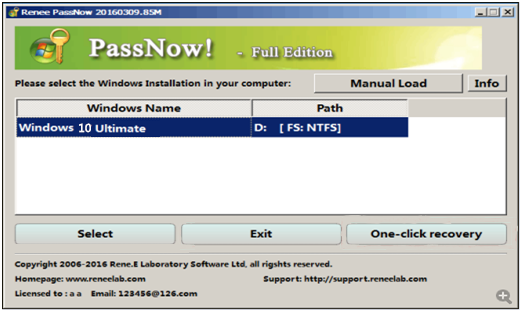
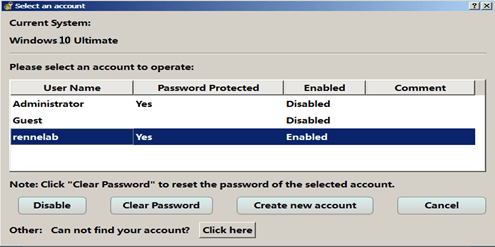
Once the password is reset, remove the bootable media from the PC and restart the computer. You will now be able to log in to Windows Account without a password.
- User-friendly and reliable tool
- Supports resetting passwords for different versions of Windows
- Simple and user-friendly interface
- Can Conversion of Microsoft Account to Local account
Cons:
- Paid program (free trial version available)
Set-LocalUser -Name "username" -Password (ConvertTo-SecureString -AsPlainText "newpassword" -Force)
Set-LocalUser -Name "username" -PasswordNeverExpires $true
Set-LocalUser -Name "username" -PasswordComplexity "Enabled"
Set-ADAccountPassword -Identity "username" -NewPassword (ConvertTo-SecureString -AsPlainText "newpassword" -Force)
$userid = [ADSI]"LDAP://CN=worker03,OU=Usr,DC=LAB,DC=Local"
$userid.psbase.invoke("SetPassword", "Password@123")
$userid.psbase.CommitChanges()

Provides multiple functions like backup, restore, clone, system migration.
Clone all data (including system) in HDD to smaller SSD or larger HDD. Disk could boot PC after clone finished.
Supports to migrate Windows to SSD with a few clicks.
4K alignment will be processed when clone disk, migrate system, restore disk or system.
Backup & restore system/disk/folder. Auto backup plans are available.
Provides functions like backup, restore, clone, system migration.
Clone all data (including system) in HDD to smaller SSD or larger HDD.
Backup & restore system/disk/folder. Auto backup plans are available.
Compatible with: Windows 10 / 8.1 / 8 / 7 / Vista / XP / 2008 / 2012(32bit/64bit) / Server 2008
Relate Links :
Resetting a Windows 7 Password: A Step-by-Step Guide Using Command Prompt
09-10-2023
John Weaver : Discover the power of command prompt and learn how to reset your Windows 7 password in a matter...
3 Easy Ways to Bypass Windows 10 Password with Command Prompt
09-10-2023
Amanda J. Brook : Unlock your Windows 10 PC with ease by exploring alternative methods to bypass the password using command prompt....
Reset Windows Account Password With Command Line: A Comprehensive Guide
09-10-2023
John Weaver : In this article, we provide a comprehensive guide on how to reset passwords using the command line with...
Forgot Your Windows 10 PIN and Have No Internet? Here's What You Can Do
08-10-2023
Amanda J. Brook : If you've forgotten your Windows 10 PIN and have no internet connection, don't worry! This article covers various...
- Method 1 : Replacing Sticky Keys program in Command Prompt to Reset Administrator Password
- Method 1 : Replacing Utility Manager to Reset Administrator Password using Windows 10 Installation Disk
- Method 3 : Reset Administrator Password using Renee PassNow
- Method 4 : Resetting Password via PowerShell if User Can Login to Account
- The Importance of Data Backup in the Password Reset Process:
- Conclusion




